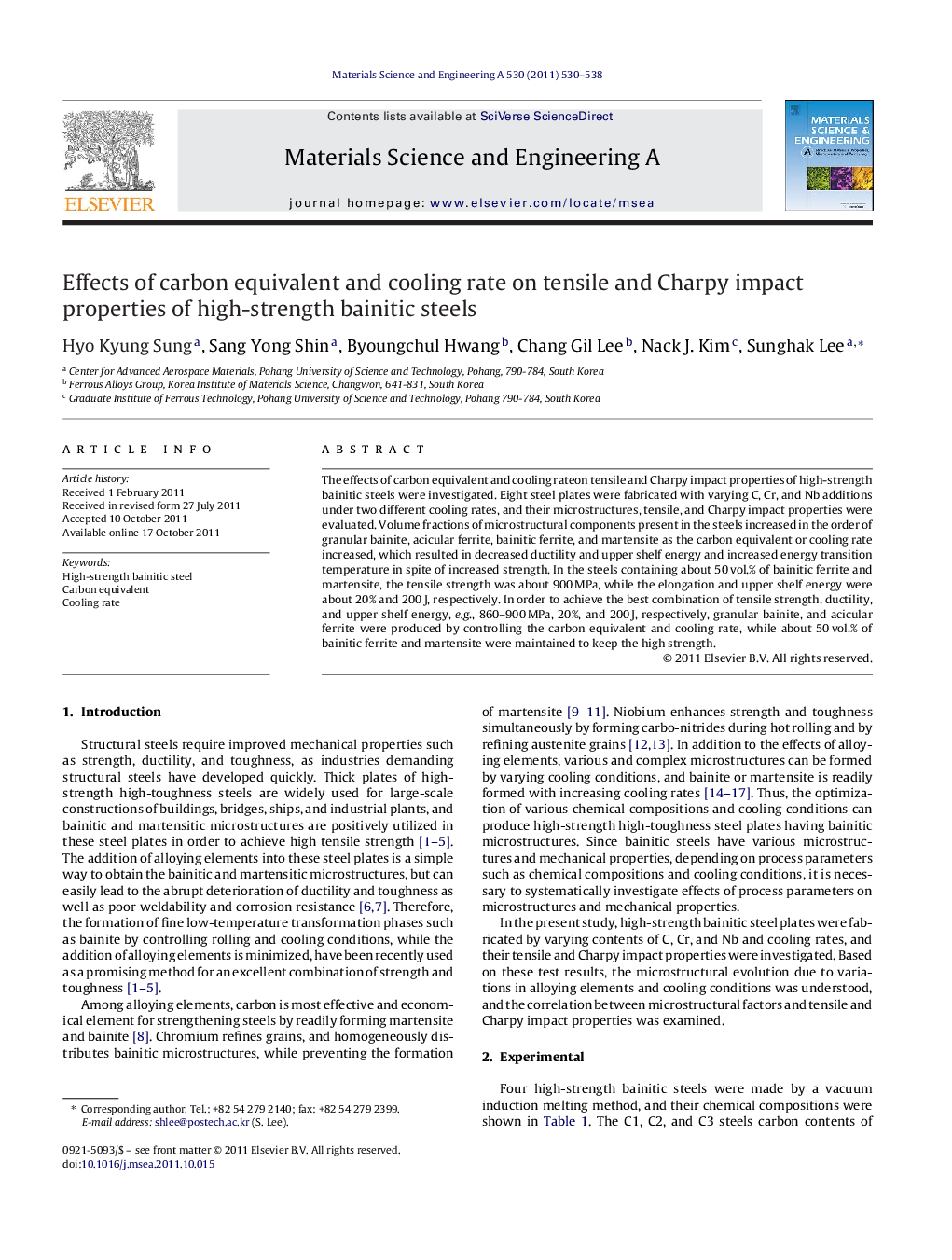| کد مقاله | کد نشریه | سال انتشار | مقاله انگلیسی | نسخه تمام متن |
|---|---|---|---|---|
| 1578022 | 1514813 | 2011 | 9 صفحه PDF | دانلود رایگان |

The effects of carbon equivalent and cooling rateon tensile and Charpy impact properties of high-strength bainitic steels were investigated. Eight steel plates were fabricated with varying C, Cr, and Nb additions under two different cooling rates, and their microstructures, tensile, and Charpy impact properties were evaluated. Volume fractions of microstructural components present in the steels increased in the order of granular bainite, acicular ferrite, bainitic ferrite, and martensite as the carbon equivalent or cooling rate increased, which resulted in decreased ductility and upper shelf energy and increased energy transition temperature in spite of increased strength. In the steels containing about 50 vol.% of bainitic ferrite and martensite, the tensile strength was about 900 MPa, while the elongation and upper shelf energy were about 20% and 200 J, respectively. In order to achieve the best combination of tensile strength, ductility, and upper shelf energy, e.g., 860–900 MPa, 20%, and 200 J, respectively, granular bainite, and acicular ferrite were produced by controlling the carbon equivalent and cooling rate, while about 50 vol.% of bainitic ferrite and martensite were maintained to keep the high strength.
The crack propagation path of (a) low Ceq, (b) high Ceq.Figure optionsDownload as PowerPoint slideHighlights
► The effects of Ceq and cooling rate on Charpy impact properties were investigated.
► Steels containing about 50 vol.% of BF and M, the tensile strength was very high.
► When the vol.% of AF increased, the Charpy absorbed energy increased.
Journal: Materials Science and Engineering: A - Volume 530, 15 December 2011, Pages 530–538